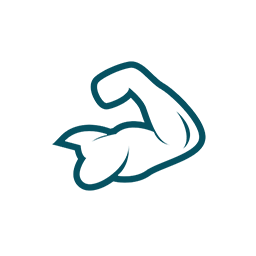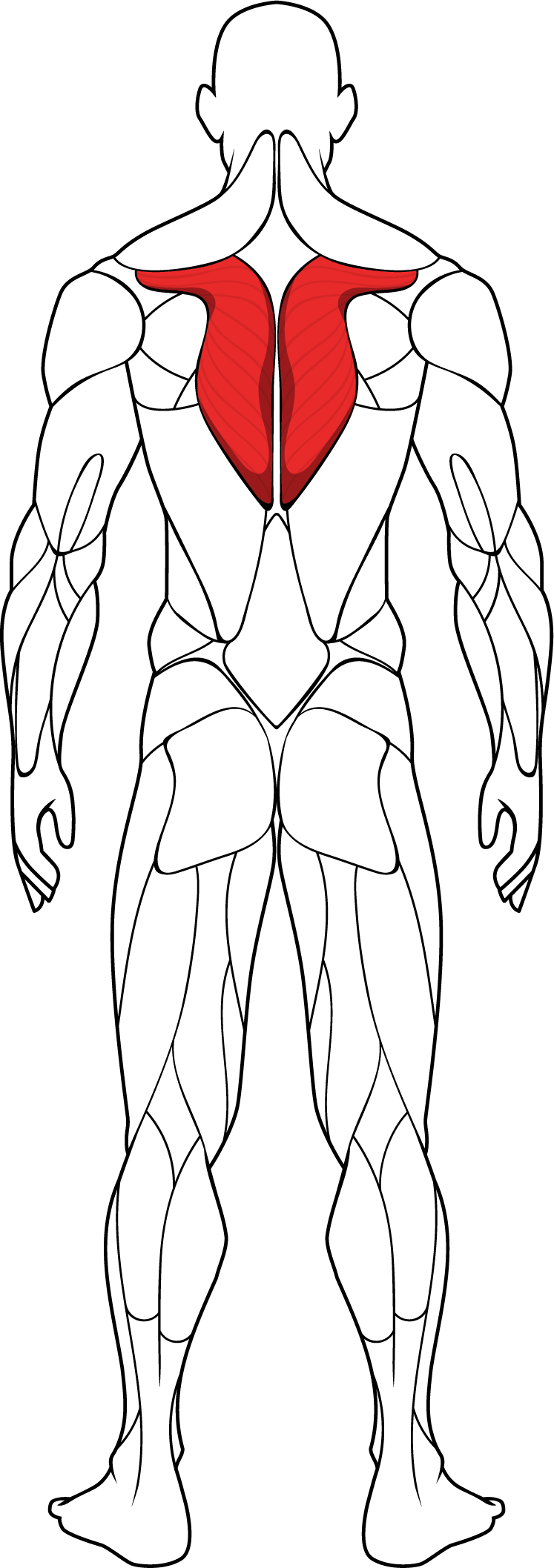The upper back muscles, also known as the thoracic or scapular muscles, refer to a group of muscles located in the upper and middle regions of the back. These muscles are responsible for various movements of the shoulder blades (scapulae), the spine, and the rib cage. Strengthening these muscles is important for maintaining proper posture, stability, and mobility of the upper body.
The upper back muscles, also known as the thoracic or scapular muscles, refer to a group of muscles located in the upper and middle regions of the back. These muscles are responsible for various movements of the shoulder blades (scapulae), the spine, and the rib cage. Strengthening these muscles is important for maintaining proper posture, stability, and mobility of the upper body.
Some of the major muscles of the upper back include:
Trapezius (Traps): The trapezius is a large, triangular muscle that spans the upper back, neck, and shoulders. It has three main parts: the upper (descending) fibers, the middle (transverse) fibers, and the lower (ascending) fibers. The trapezius muscle plays a key role in movements of the shoulder blades, including elevation (shrugging), depression (lowering), retraction (pulling back), and rotation.
Rhomboids: The rhomboid muscles consist of the rhomboid major and rhomboid minor, which are located deep to the trapezius muscle. These muscles originate from the spinous processes of the thoracic vertebrae and insert into the medial border of the scapula. The rhomboids are primarily responsible for retracting the shoulder blades (bringing them closer together) and downwardly rotating them.
Levator Scapulae: The levator scapulae muscle is located on the side and back of the neck, running from the upper cervical vertebrae to the medial border of the scapula. It is involved in elevating the scapula (raising the shoulder blade) and rotating it downward.
Serratus Anterior: While technically not an upper back muscle, the serratus anterior plays an important role in stabilizing the scapula and supporting movements of the arms and shoulders. It originates from the lateral surface of the upper eight or nine ribs and inserts into the medial border of the scapula. The serratus anterior is particularly active during movements that involve protraction (reaching forward) and upward rotation of the scapula.
Erector Spinae: The erector spinae muscles are a group of muscles that run along the length of the spine, primarily in the lower back but also extending into the thoracic region. While the erector spinae primarily function to extend the spine (bringing the torso upright from a bent position), they also contribute to overall back stability and posture.
Posterior Deltoids: While primarily responsible for shoulder movement, the posterior deltoids also play a role in upper back stability and are involved in movements that retract and stabilize the shoulder blades.
Strengthening exercises for the upper back muscles typically involve movements that target scapular retraction, elevation, depression, and rotation, as well as spinal extension. Some common exercises include:
Rows: Various rowing exercises, such as bent-over rows, seated rows, and inverted rows, target the rhomboids, trapezius, and other upper back muscles.
Pull-Ups and Chin-Ups: These exercises primarily target the latissimus dorsi (a large muscle in the back), but they also engage the upper back muscles, including the traps and rhomboids, to stabilize and support the movement.
Face Pulls: Face pulls with a resistance band or cable machine are effective for targeting the rear deltoids, rhomboids, and upper traps.
Shrugs: Shrugs involve lifting the shoulders toward the ears, targeting the upper traps primarily.
Supermans: This exercise targets the erector spinae and other muscles along the spine, promoting spinal extension and strengthening the upper back.
Scapular Retraction Exercises: These exercises focus on pulling the shoulder blades back and together, such as scapular retractions using a resistance band or cable machine.
Incorporating a combination of these exercises into your workout routine can help strengthen and tone the upper back muscles, improve posture, and reduce the risk of upper back pain and injuries. As with any exercise program, it's essential to perform movements with proper form and technique to maximize effectiveness and minimize the risk of injury. If you're new to strength training or have any concerns, consider working with a qualified fitness professional to develop a safe and effective workout plan tailored to your goals and fitness level.
Some of the major muscles of the upper back include:
Trapezius (Traps): The trapezius is a large, triangular muscle that spans the upper back, neck, and shoulders. It has three main parts: the upper (descending) fibers, the middle (transverse) fibers, and the lower (ascending) fibers. The trapezius muscle plays a key role in movements of the shoulder blades, including elevation (shrugging), depression (lowering), retraction (pulling back), and rotation.
Rhomboids: The rhomboid muscles consist of the rhomboid major and rhomboid minor, which are located deep to the trapezius muscle. These muscles originate from the spinous processes of the thoracic vertebrae and insert into the medial border of the scapula. The rhomboids are primarily responsible for retracting the shoulder blades (bringing them closer together) and downwardly rotating them.
Levator Scapulae: The levator scapulae muscle is located on the side and back of the neck, running from the upper cervical vertebrae to the medial border of the scapula. It is involved in elevating the scapula (raising the shoulder blade) and rotating it downward.
Serratus Anterior: While technically not an upper back muscle, the serratus anterior plays an important role in stabilizing the scapula and supporting movements of the arms and shoulders. It originates from the lateral surface of the upper eight or nine ribs and inserts into the medial border of the scapula. The serratus anterior is particularly active during movements that involve protraction (reaching forward) and upward rotation of the scapula.
Erector Spinae: The erector spinae muscles are a group of muscles that run along the length of the spine, primarily in the lower back but also extending into the thoracic region. While the erector spinae primarily function to extend the spine (bringing the torso upright from a bent position), they also contribute to overall back stability and posture.
Posterior Deltoids: While primarily responsible for shoulder movement, the posterior deltoids also play a role in upper back stability and are involved in movements that retract and stabilize the shoulder blades.
Strengthening exercises for the upper back muscles typically involve movements that target scapular retraction, elevation, depression, and rotation, as well as spinal extension. Some common exercises include:
Rows: Various rowing exercises, such as bent-over rows, seated rows, and inverted rows, target the rhomboids, trapezius, and other upper back muscles.
Pull-Ups and Chin-Ups: These exercises primarily target the latissimus dorsi (a large muscle in the back), but they also engage the upper back muscles, including the traps and rhomboids, to stabilize and support the movement.
Face Pulls: Face pulls with a resistance band or cable machine are effective for targeting the rear deltoids, rhomboids, and upper traps.
Shrugs: Shrugs involve lifting the shoulders toward the ears, targeting the upper traps primarily.
Supermans: This exercise targets the erector spinae and other muscles along the spine, promoting spinal extension and strengthening the upper back.
Scapular Retraction Exercises: These exercises focus on pulling the shoulder blades back and together, such as scapular retractions using a resistance band or cable machine.
Incorporating a combination of these exercises into your workout routine can help strengthen and tone the upper back muscles, improve posture, and reduce the risk of upper back pain and injuries. As with any exercise program, it's essential to perform movements with proper form and technique to maximize effectiveness and minimize the risk of injury. If you're new to strength training or have any concerns, consider working with a qualified fitness professional to develop a safe and effective workout plan tailored to your goals and fitness level.


